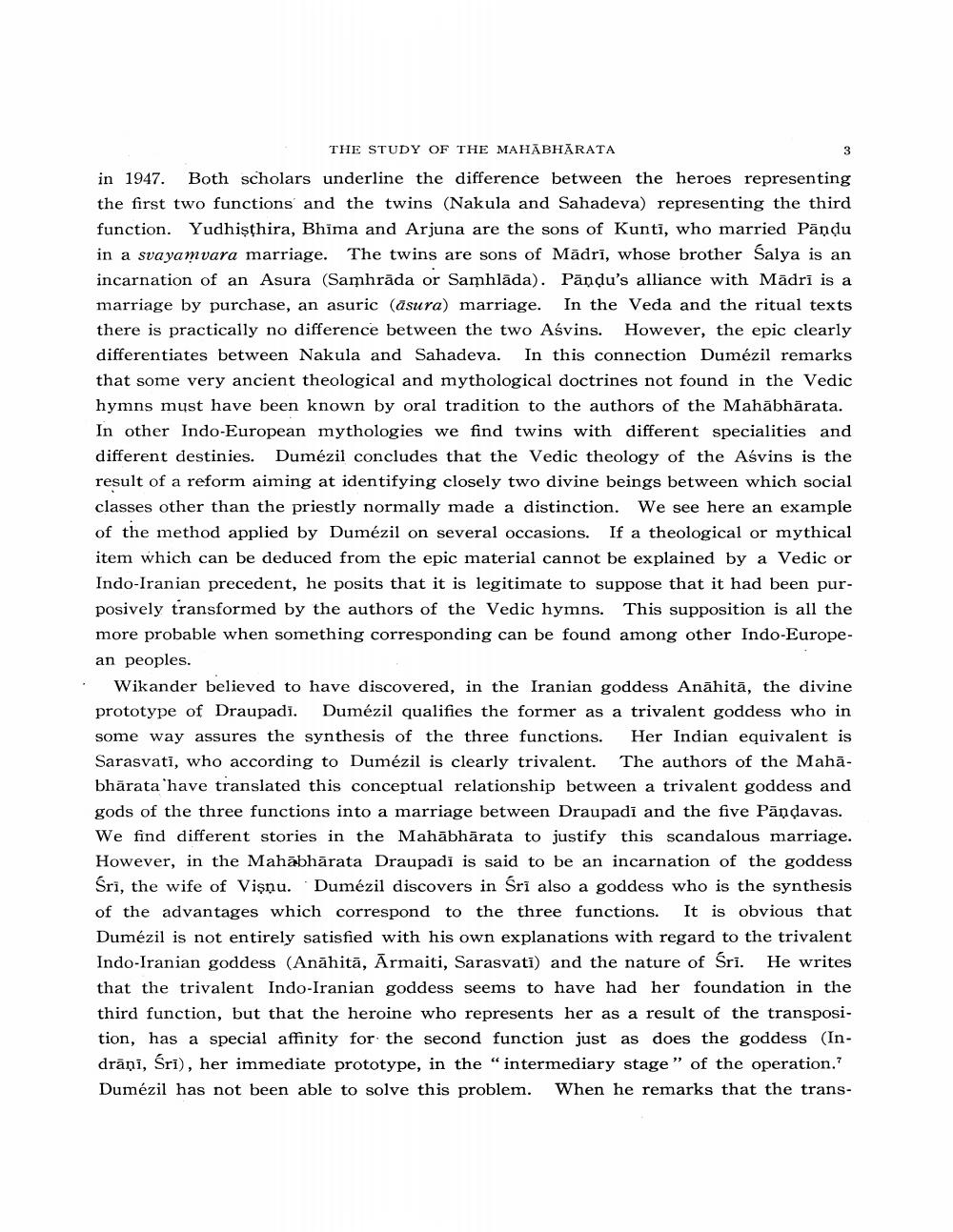Book Title: Study Of Mahabharata Author(s): J W De Jong Publisher: J W De Jong View full book textPage 3
________________ THE STUDY OF THE MAHABHARATA in 1947. Both scholars underline the difference between the heroes representing the first two functions and the twins (Nakula and Sahadeva) representing the third function. Yudhiṣṭhira, Bhima and Arjuna are the sons of Kunti, who married Pandu in a svayamvara marriage. The twins are sons of Madri, whose brother Salya is an incarnation of an Asura (Samhrada or Samhlāda). Pāṇḍu's alliance with Madri is a marriage by purchase, an asuric (āsura) marriage. In the Veda and the ritual texts there is practically no difference between the two Aśvins. However, the epic clearly differentiates between Nakula and Sahadeva. In this connection Dumézil remarks that some very ancient theological and mythological doctrines not found in the Vedic hymns must have been known by oral tradition to the authors of the Mahābhārata. In other Indo-European mythologies we find twins with different specialities and different destinies. Dumézil concludes that the Vedic theology of the Aśvins is the result of a reform aiming at identifying closely two divine beings between which social classes other than the priestly normally made a distinction. We see here an example of the method applied by Dumézil on several occasions. If a theological or mythical item which can be deduced from the epic material cannot be explained by a Vedic or Indo-Iranian precedent, he posits that it is legitimate to suppose that it had been purposively transformed by the authors of the Vedic hymns. This supposition is all the more probable when something corresponding can be found among other Indo-European peoples. 3 Wikander believed to have discovered, in the Iranian goddess Anahita, the divine prototype of Draupadi. Dumézil qualifies the former as a trivalent goddess who in some way assures the synthesis of the three functions. Her Indian equivalent is Sarasvati, who according to Dumézil is clearly trivalent. The authors of the Mahabharata have translated this conceptual relationship between a trivalent goddess and gods of the three functions into a marriage between Draupadi and the five Pāṇḍavas. We find different stories in the Mahabharata to justify this scandalous marriage. However, in the Mahabharata Draupadi is said to be an incarnation of the goddess Śri, the wife of Vişņu. Dumézil discovers in Śrī also a goddess who is the synthesis of the advantages which correspond to the three functions. It is obvious that Dumézil is not entirely satisfied with his own explanations with regard to the trivalent Indo-Iranian goddess (Anāhitā, Ārmaiti, Sarasvati) and the nature of Sri. He writes that the trivalent Indo-Iranian goddess seems to have had her foundation in the third function, but that the heroine who represents her as a result of the transposition, has a special affinity for the second function just as does the goddess (Indrāņi, Śrī), her immediate prototype, in the "intermediary stage" of the operation.' Dumézil has not been able to solve this problem. When he remarks that the transPage Navigation
1 2 3 4 5 6 7 8 9 10 11 12 13 14 15 16 17 18 19 20 21
